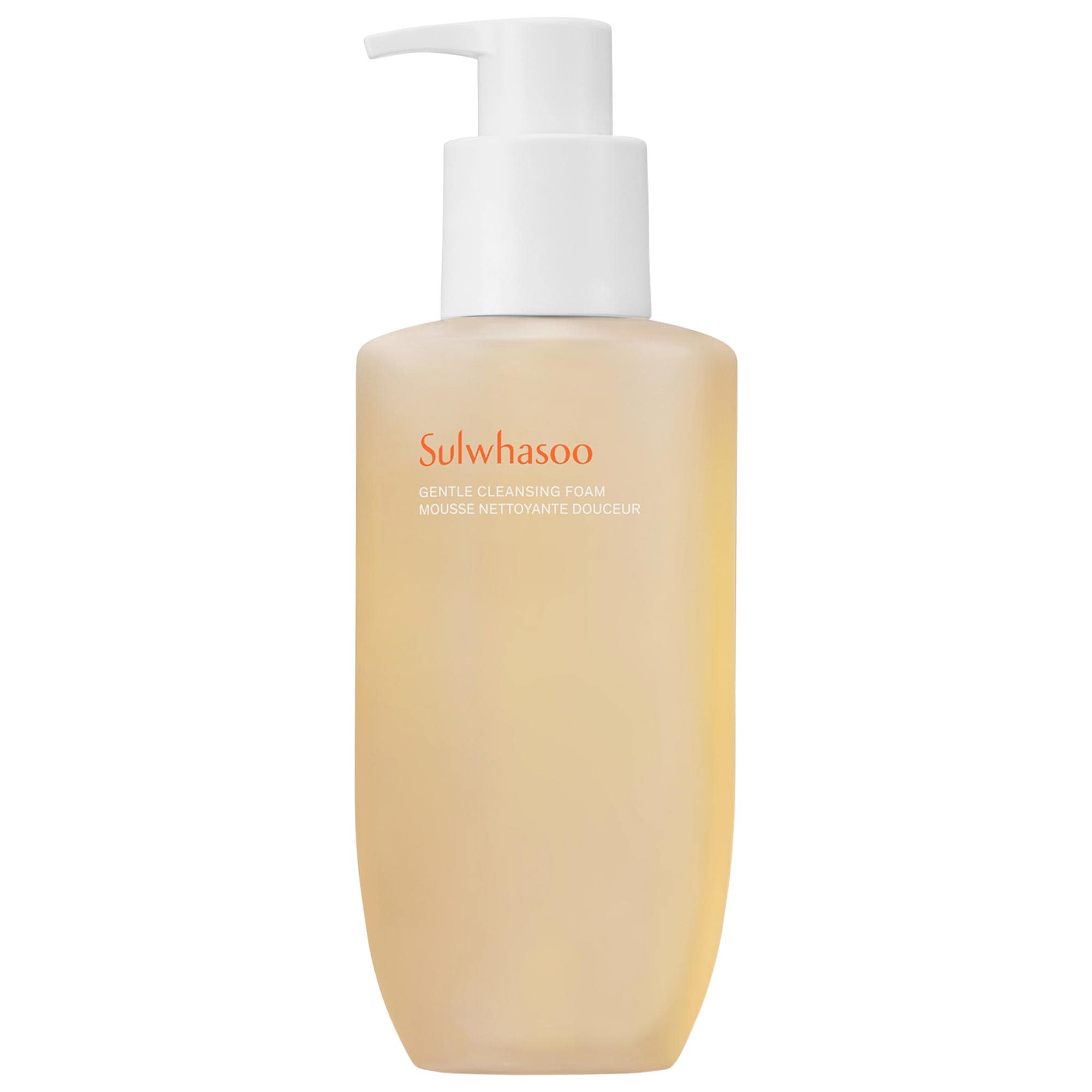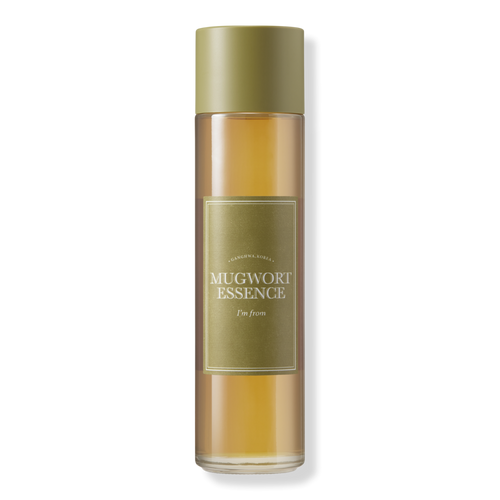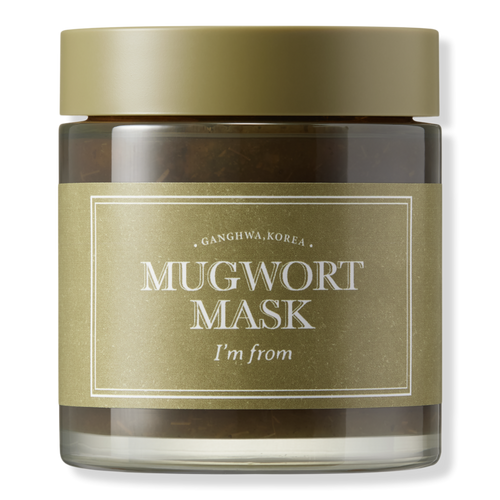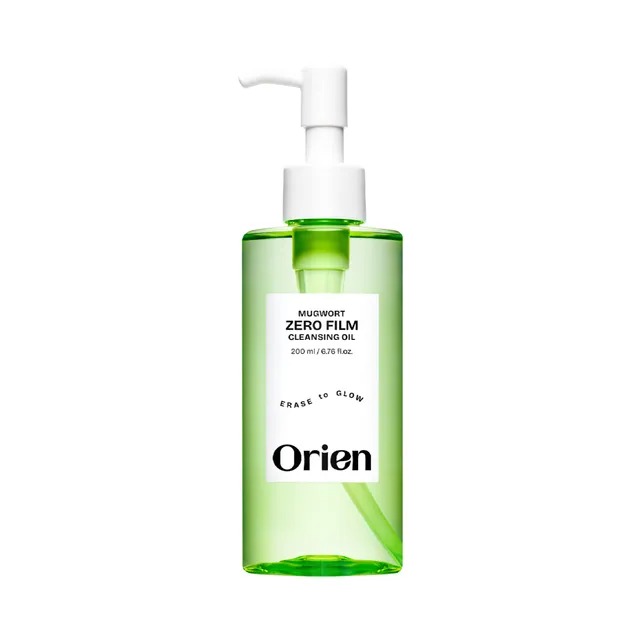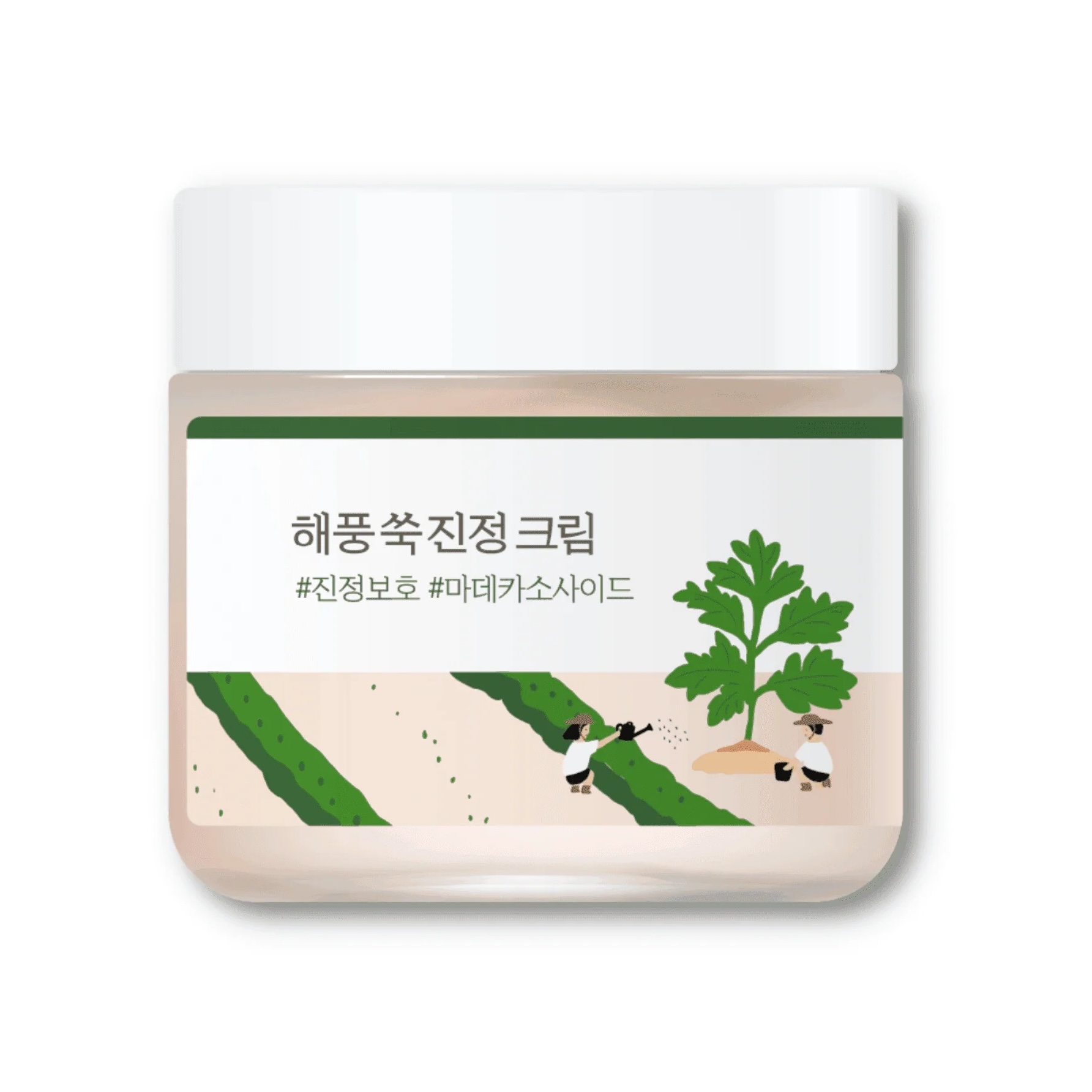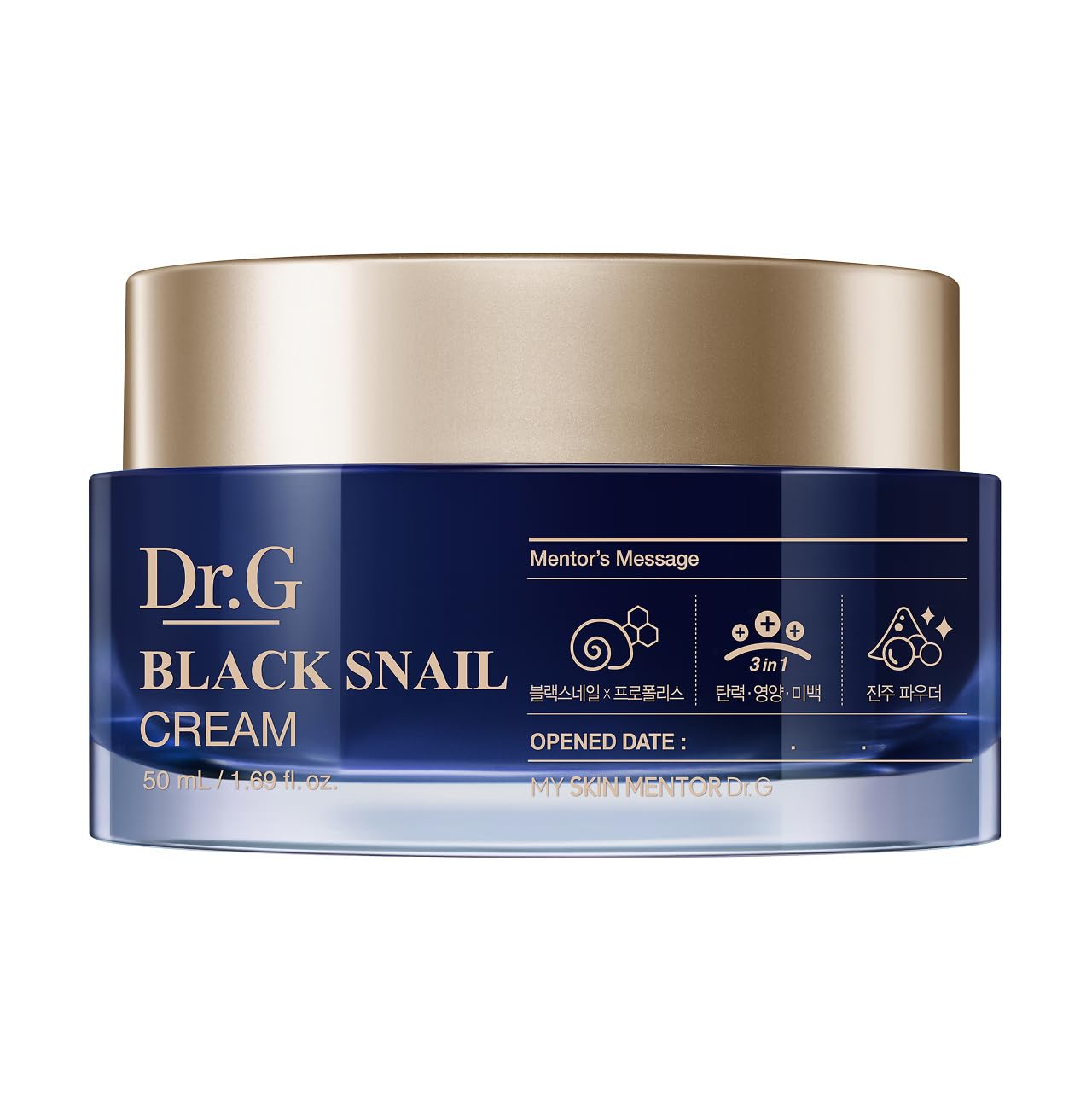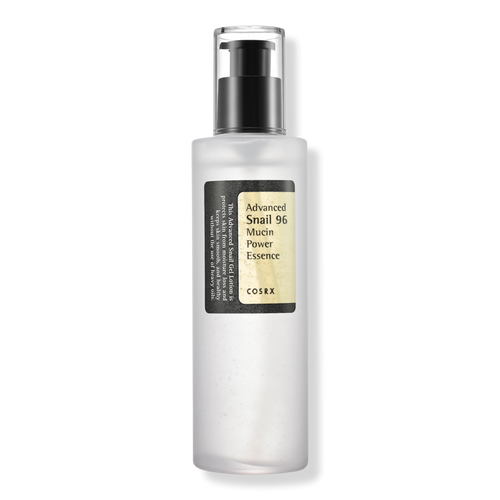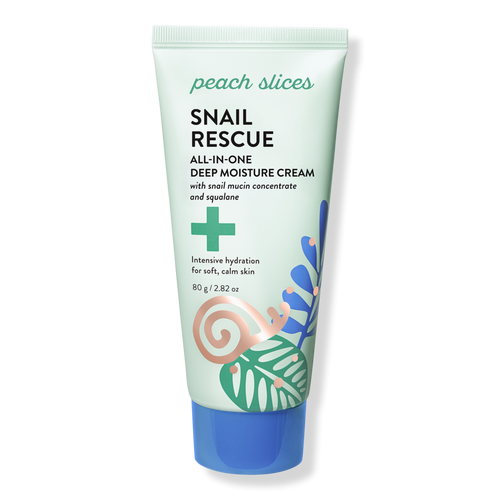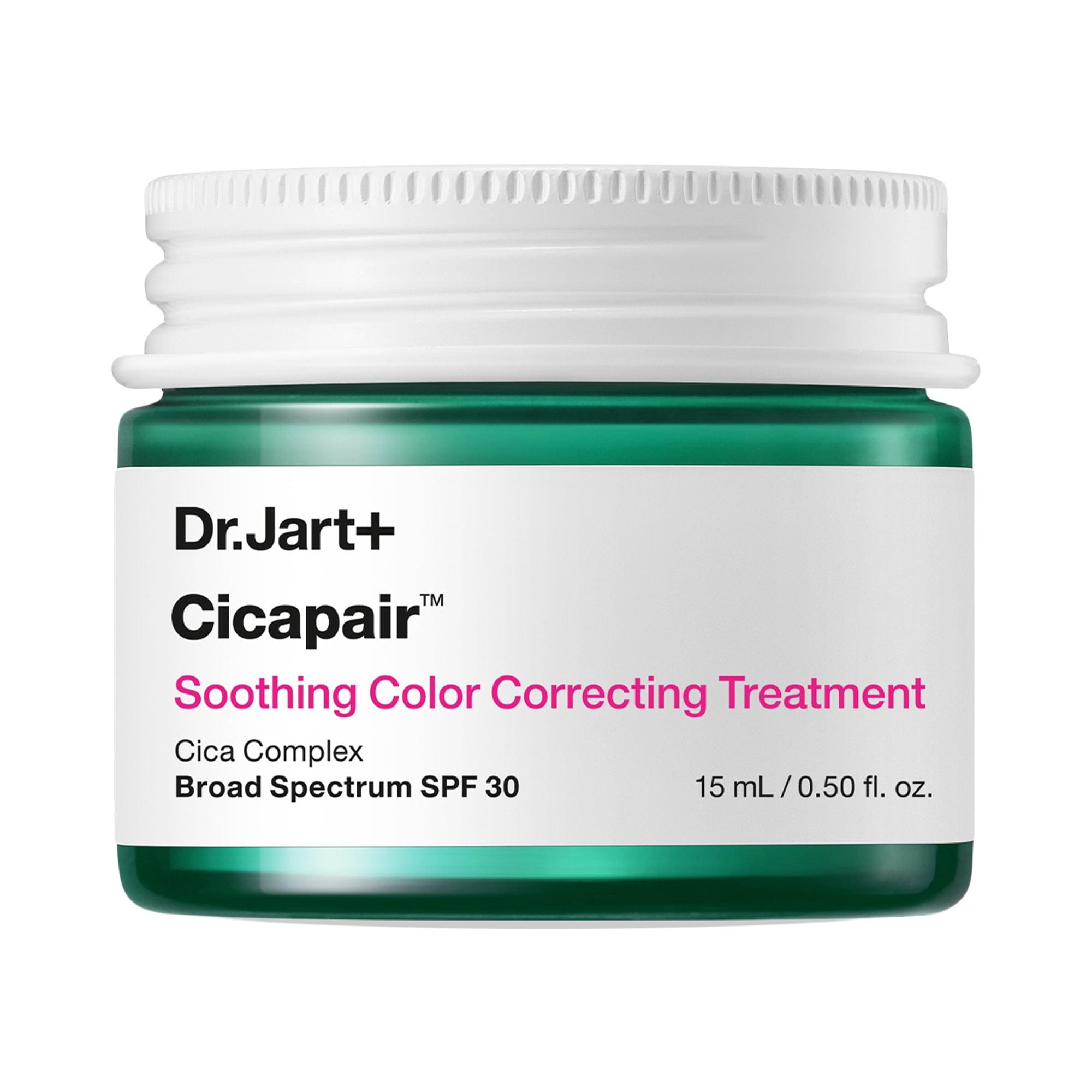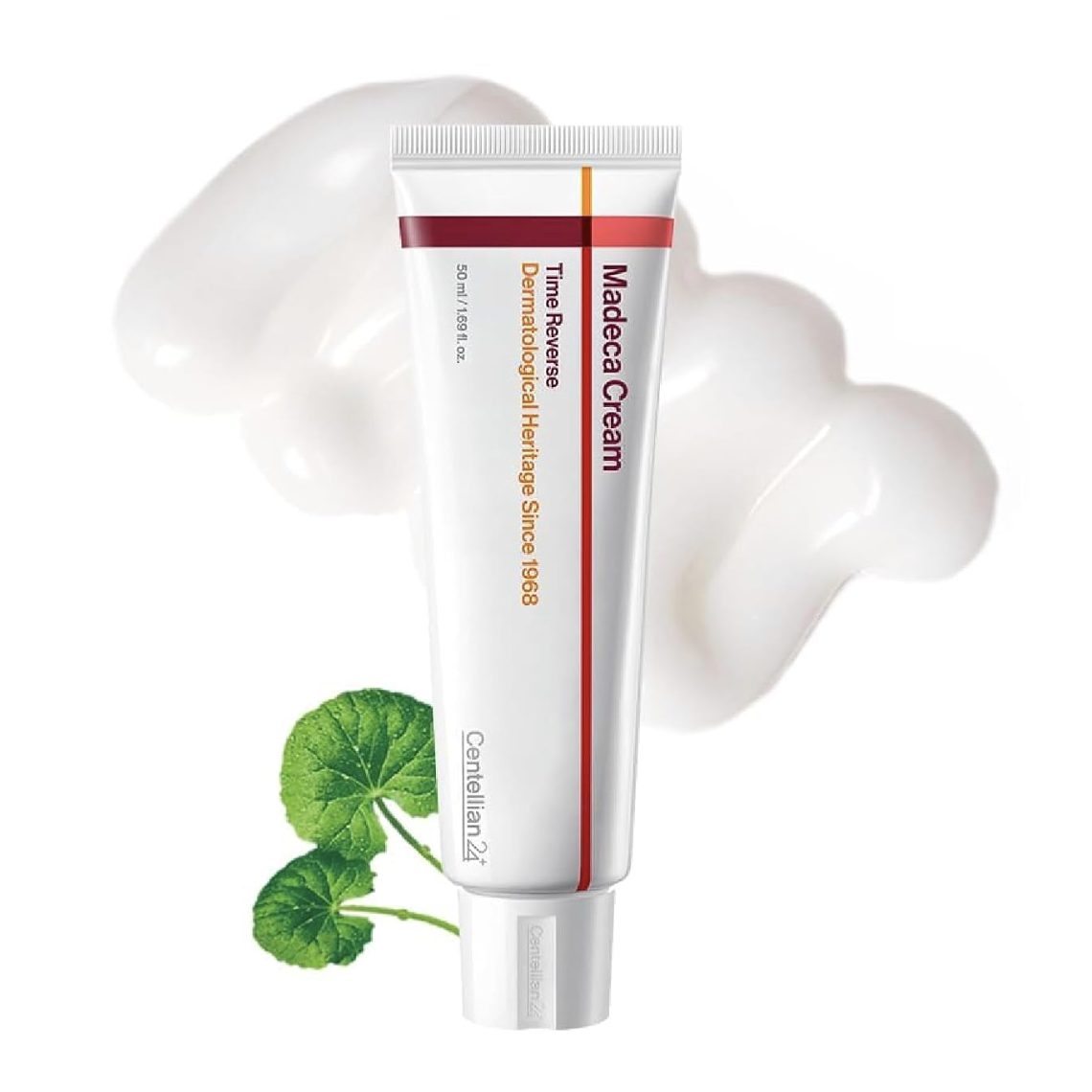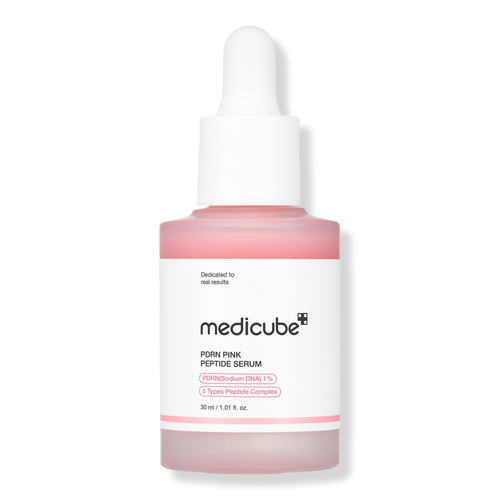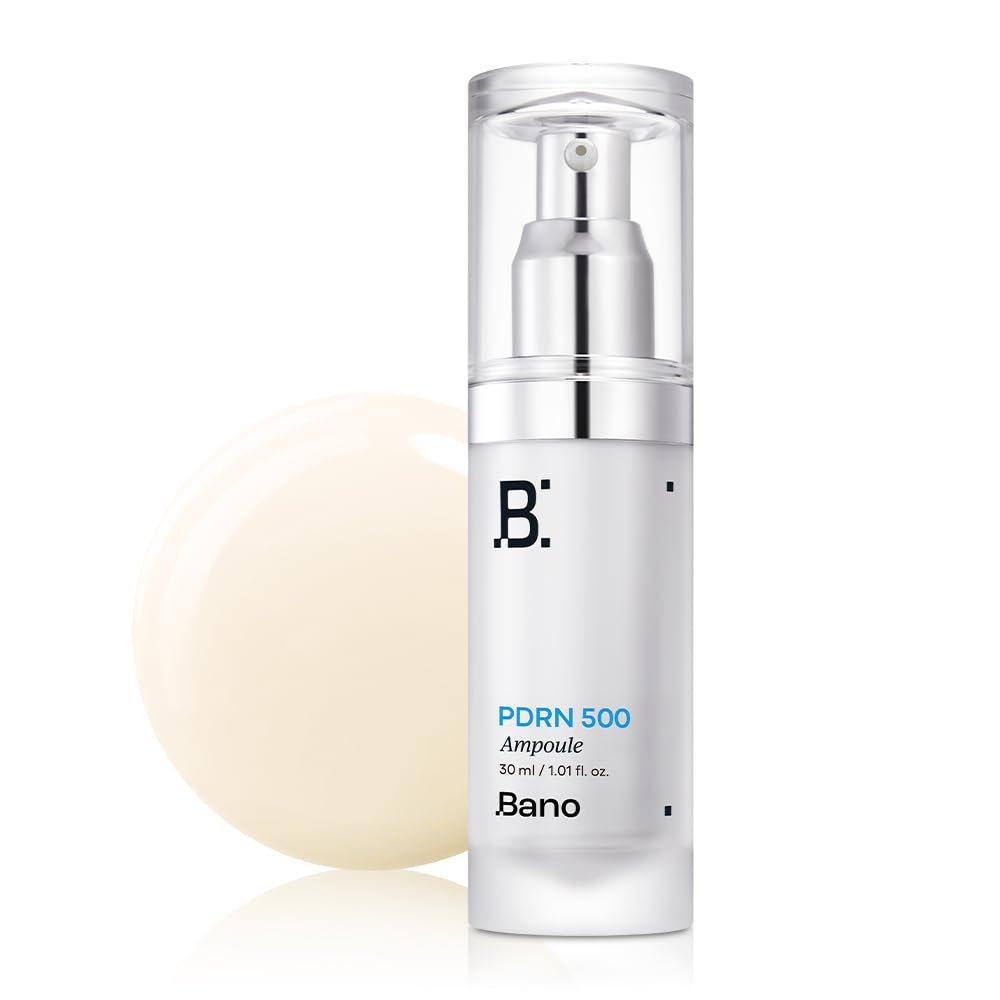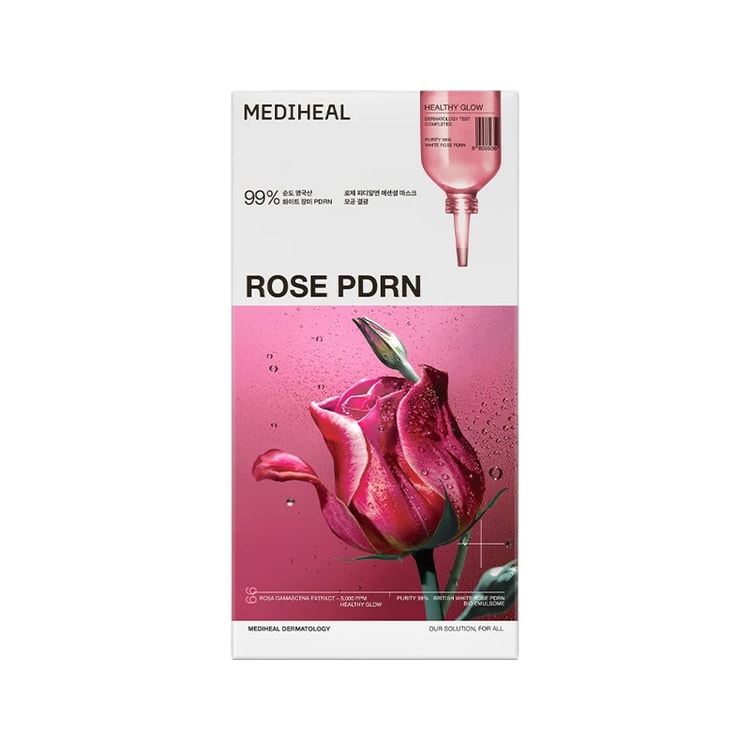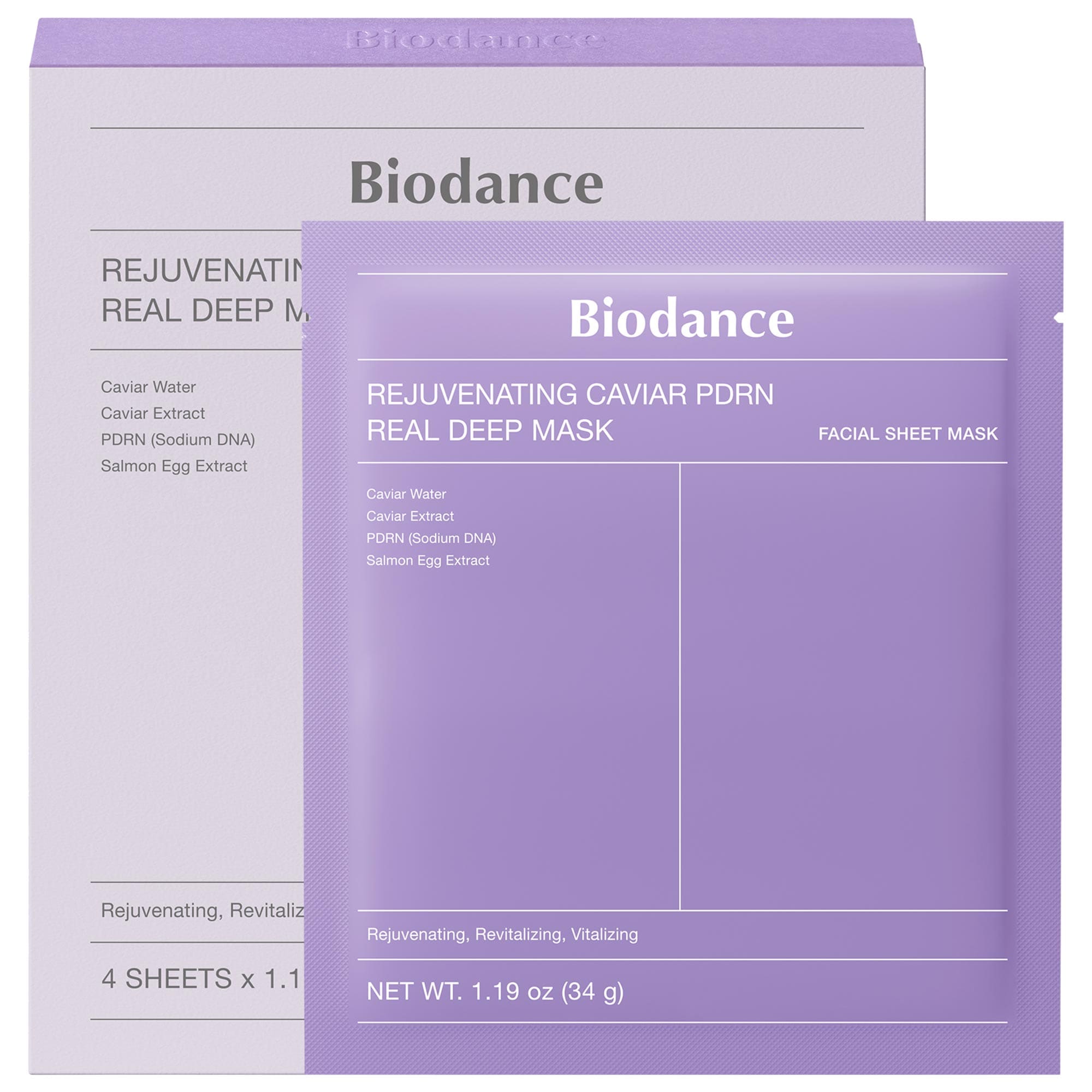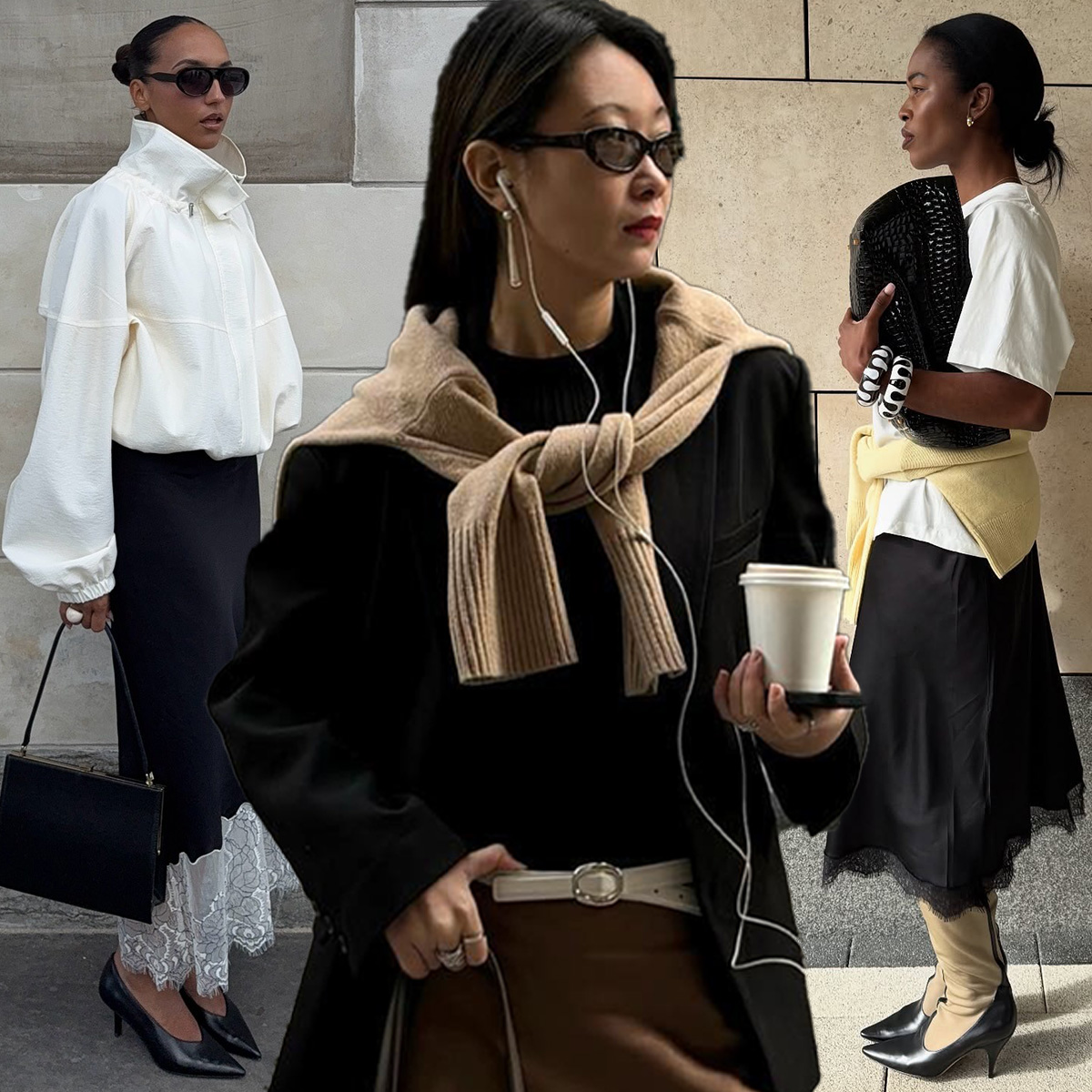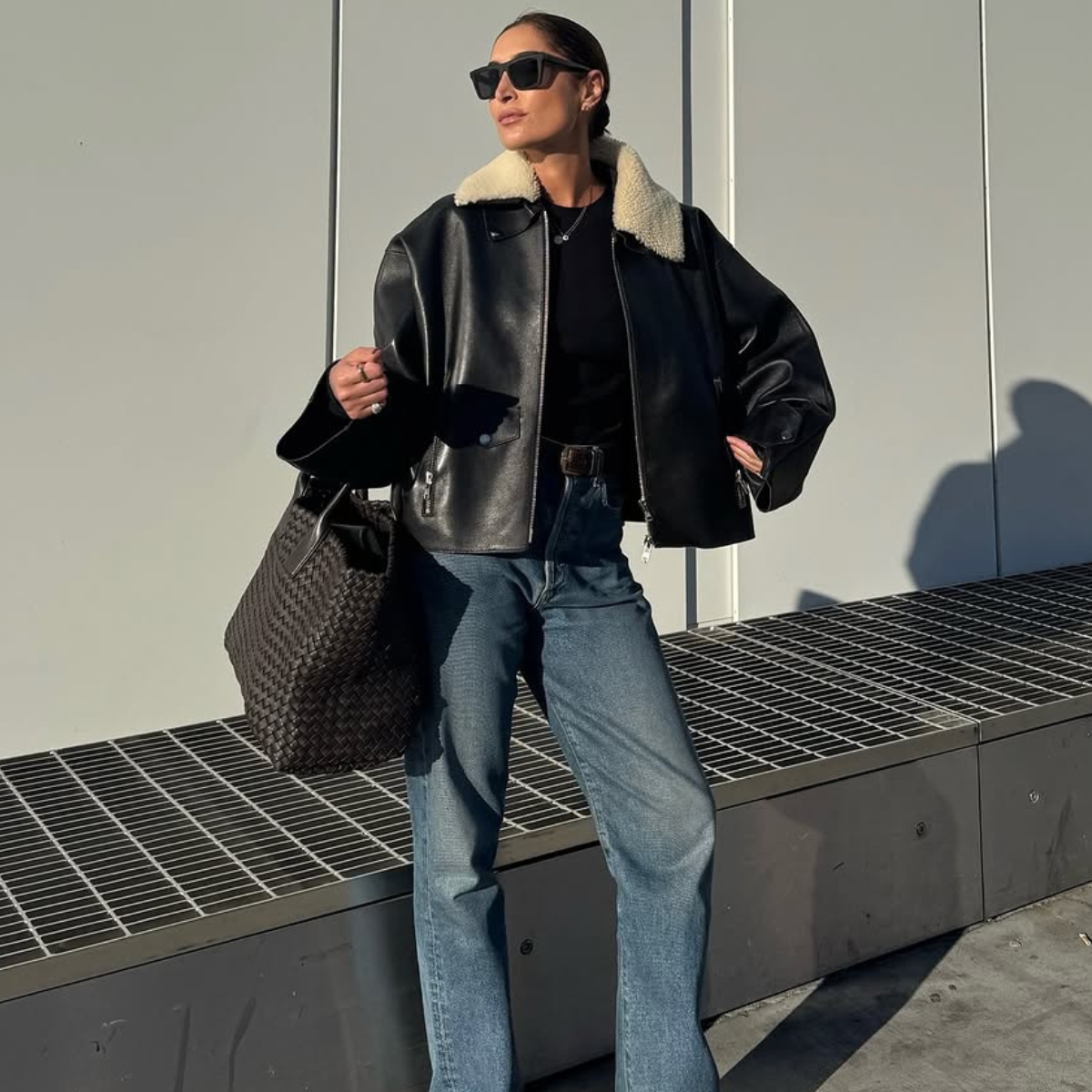From Ginseng to PDRN: 5 Korean Skincare Ingredients Powering the Internet's Favorite, High-Efficiency Products
They set the standard for great skin.
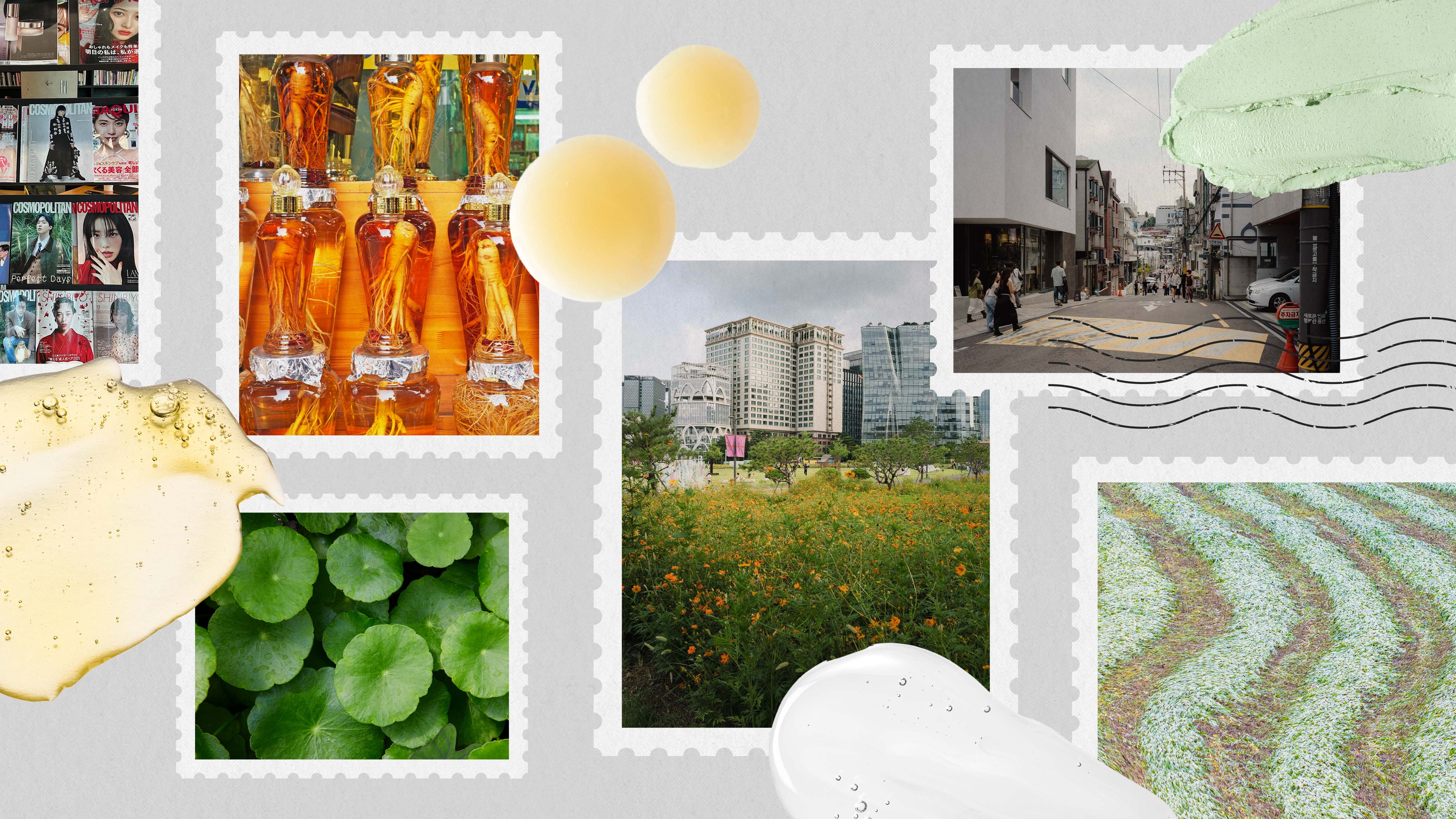


Welcome to Worldly Beauty, a quarterly franchise in which we highlight beauty products, ingredients, and traditions rooted in culture. To offer an in-depth look, we're sharing perspectives and recommendations from local experts and tastemakers. A celebration of diversity, this column goes beyond what we know to shed light on the beauty practices and philosophies that make the world go round.

A certain country or region solidifies its reputation when it becomes synonymous with the product it produces. Take French wine, for example, or Italian leather. Sure, high-quality products exist elsewhere, but there’s something authentic and standard-setting about sourcing them from a highly reputable locale. When it comes to the skincare industry, that locale is South Korea. Over the years, it has cemented itself as the leader of innovation and engineering. It doesn't just set trends—it envisions, creates, and dictates them.
It's easy to take for granted the sheer amount of new technology, product formats, and aesthetic trends that South Korea has contributed to the global beauty landscape—things like overnight masks, cleansing oils, and the "glass skin" trend. It's even easier to take for granted the sheer number of ingredients it has popularized—ingredients that have spread Stateside and are found in hundreds, if not thousands, of best-selling skincare products. So what makes South Korea a leading authority in skincare? Experts say there's no simple answer.
Anna Karp, MD, is a board-certified dermatologist and assistant clinical professor of dermatology at NYU School of Medicine. She says South Korea's stellar reputation for skincare stems from multiple social, economic, and scientific factors, including strong consumer demand, a highly competitive marketplace, and robust research and development. There are also cultural considerations. "In the culture, skincare starts early with emphasis on sun protection," she says. "The consumers are very skincare literate, pushing companies to constantly improve formulas. Korean brands reinvest heavily into research, biotech, and new formulations."
Sylvia Eunsun Cho is Sulwhasoo's Americas R&I associate director. She says accessibility is the key to understanding South Korea's influence on the skincare industry. "In Korea, skincare is incredibly easy to find, from dedicated beauty stores to pharmacies with over-the-counter options, and even budget-friendly shops like Daiso. (Think of dollar stores in the U.S.) High-quality products are available at every price point, making skincare affordable, approachable, and part of everyday life for everyone."
She also notes Korea's use of unique ingredients "that are not commonly used in many other parts of the world." While there are so many to discuss (Birch sap! Rice water! Fermented ingredients!), we'll be taking a look at five in particular: ginseng, mugwort, snail mucin, Centella asiatica, and PDRN. Each one is grown, extracted, and/or utilized in its unique way, but they all have one thing in common: efficacy. They're wildly popular not only in the U.S. but around the world thanks to their skin-transforming potential. Ahead, learn everything you need to know about these five innovative ingredients.
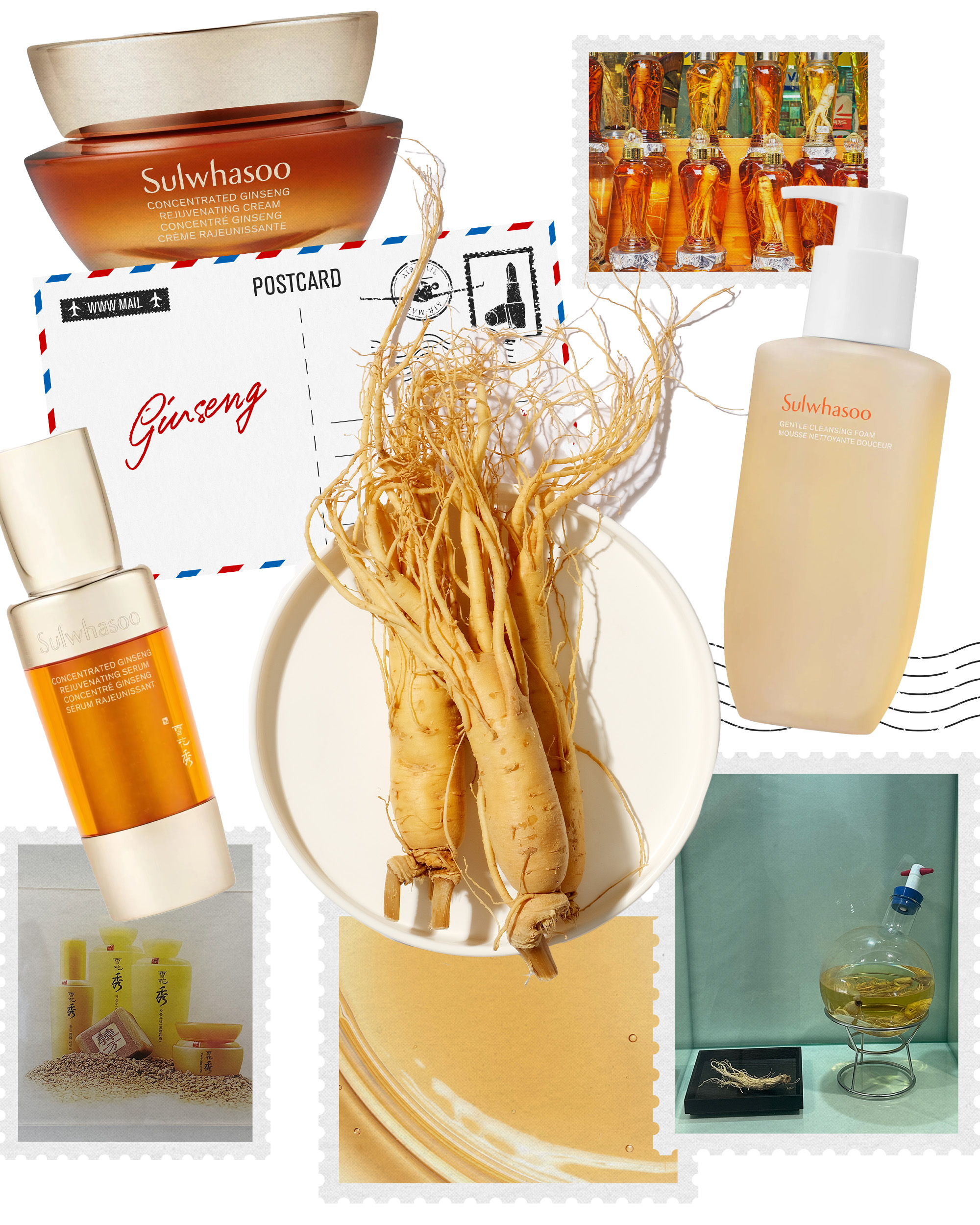
Ginseng is a well-established ingredient in the skincare, wellness, and food and beverage industries, but not all ginseng is the same (not even close). The type you use, as well as the way in which you extract it, makes all the difference. Sulwhasoo, the luxury heritage Korean beauty brand, is the skincare industry's leading authority on ginseng. It's the brand's hero ingredient and is formulated in its iconic, best-selling products, such as the First Care Activating Serum ($89).
According to Cho, there are three major species (Panax) in the world: Panax ginseng from Korea, Panax quinquefolius from the U.S., and Panax notoginseng from China. "They may look similar, but they are quite different from a genetic view. Among these, Panax ginseng—also known as Korean ginseng—is considered the most effective. Korean ginseng is proven to contain the highest levels of ginseng actives when compared to Chinese and American ginseng."
It's native to the Korean Peninsula and Northeastern China. "Known as 'Koryo Insam,' Korean ginseng earned its reputation because it was found to be much more effective compared to ginseng from other regions," Cho says. It has been part of Korean culture for over 2000 years, especially in regard to traditional medicine and cuisine. "Beyond skincare, Koreans have long used ginseng as a key ingredient in herbal remedies to improve stamina, immunity, and overall vitality. It appears in traditional tonics, teas, and medicinal broths that are still widely consumed today." In Korean cuisine, ginseng is used both for its flavor and its wellness-boosting benefits. "The most iconic example is 'samgyetang', a chicken soup stuffed with ginseng, jujube, and sticky rice, believed to replenish energy and strengthen the body," Cho says. "Ginseng is also used in liqueurs, and many people even make their own ginseng-infused versions at home using fresh ginseng and high-quality soju. These homemade liqueurs are often enjoyed during festive occasions and family gatherings."
In regard to skincare, ginseng is a powerful and potent ingredient when used at peak concentration. It's rich in antioxidants, can reduce inflammation, prevent accelerated skin aging, and support a healthy-looking complexion. However, Cho says it's "especially beneficial for those concerned with firmness, dullness, and visible signs of aging. In Korea, Sulwhasoo is particularly popular among 'ajummas,' a Korean term referring to middle-aged women, who appreciate ginseng for its visible firming, brightening, and revitalizing effects."
Jae Yong Ban is a board-certified dermatologist and the medical director of Banobagi Dermatology Clinic and CEO of Bano Cosmetics. He notes that the modern use of Korean ginseng in cosmetics began in 1966, which was when AmorePacific (Sulwhasoo's parent company) launched the ABC Ginseng Cream. "Among its components, saponins—specifically ginsenosides—are the most essential," he says. "Ginsenosides help reduce signs of aging and diminish wrinkles."
The key is to cultivate and extract it carefully and correctly to achieve peak potency, and no other brand has achieved this like Sulwhasoo. It starts with the growing process. Michelle Shieh is Sulwhasoo's scientific communications associate director. She says the brand has revolutionized ginseng cultivation through advanced smart-farm technologies. "Rather than relying on traditional fields vulnerable to disease and extreme weather, we use sensors and automated controls to precisely regulate temperature, humidity, light, and nutrient levels, creating an optimized environment for ginseng growth," she says. "Only ginseng that reaches four years of age and passes Sulwahsoo's rigorous standards is selected. Our ginseng actually undergoes more safety testing than food-grade ginseng, with over 300 individual tests performed. This uncompromising approach means that only a small fraction of ginseng meets the high standards, ensuring the highest quality for our ginseng ingredients."
Once the ginseng has passed the rigorous tests, it can be extracted for use in skincare products. "Sulwhasoo extracts ginseng and then refines it using a proprietary Bioconversion Technology developed by AmorePacific," Cho says. "This method transforms ginseng saponins into forms that the skin can utilize more efficiently. Through this process, the ginseng’s active saponins are converted into smaller, biologically active molecules that the skin can readily recognize and absorb. Bypassing the skin’s own metabolic conversion step, the ingredient maintains a higher level of bioavailability and delivers benefits effectively. As a result, the formula provides a more concentrated and highly effective anti-aging benefit."
Shop the Ingredient

Mugwort is another herbal ingredient Koreans have used for millennia. These days, it's a key component of skincare products, wellness rituals, and food and beverages. The perennial plant belongs to the daisy family, and it's native to Alaska, Europe, North Africa, and Asia. In South Korea, specifically, it has a long history of being consumed in teas, soups, and rice cakes. It's also used in medicinal baths to relieve aches and pains.
As for the skin, Karp says it's been widely incorporated into skincare over the past 10 to 20 years and is known for its soothing, protective properties. As a known antibacterial and anti-inflammatory ingredient, it's particularly suitable for sensitive skin types—think acne and/or rosacea, Karp says.
Ban agrees. "Mugwort is known for its excellent soothing properties, offering strong calming and anti-inflammatory effects. It is rich in minerals and vitamins A and C. While mugwort has been used for thousands of years as a medicinal herb in Korea and China, its incorporation into modern skincare formulations is relatively recent, less than 10 years. It has reemerged as a trend in the past five to 10 years."
Shop the Ingredient

Snail mucin has to be one of the most popular and widely used Korean skincare ingredients on the market right now. In fact, snail mucin skincare products continue to go viral on social media. (The most notable is perhaps CosRx's Advanced Snail 96 Mucin Power Essence. It's all over IG and TikTok.)
Snail mucin is exactly what it sounds like—the gel-like substance that's secreted by, well, snails. It might sound off-putting to the uninitiated, but snail-mucin lovers know how it can transform dry and dehydrated skin into smooth, plump, and moisturized skin. "Snail secretion filtrate is rich in glycoproteins, hyaluronic acid, peptides, and antioxidants," Karp says. "It provides excellent hydration, supporting the skin barrier."
While it was popularized in K-beauty, Ban says it has an interesting international history. "In 1974, a Chilean brand called Elicina (also known as Coesam) introduced the first snail-mucin product. Farmers who handled snails noticed that their skin wounds healed unusually fast. Researchers later discovered that this was due to the mucin in snail secretions, which led to its use in skincare."
Since then, it's become lauded for its skin-regenerating and wound-healing benefits. Although, Ban agrees that its primary benefit is hydration through moisture retention. He says it can improve "the skin's oil-to-moisture balance." Hence it's particularly useful for people with dry and dehydrated skin types.
Shop the Ingredient
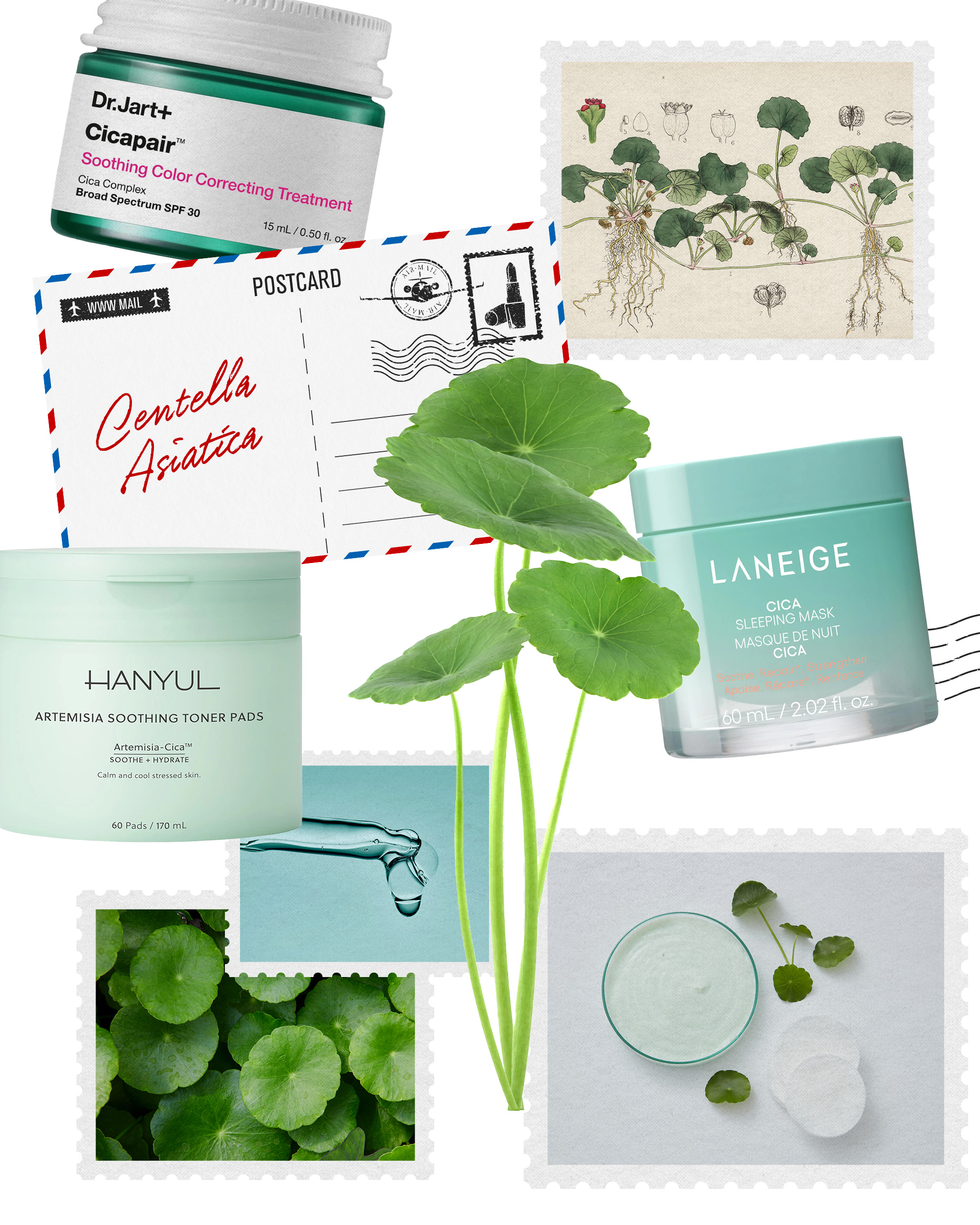
Mugwort isn't the only stellar soothing ingredient to be popularized by Korean skincare companies. Centella asiatica is another prime example. This ingredient is also referred to as "tiger grass" and "cica." Despite its many names, it's known for one thing: soothing irritation and "putting out the fire," so to speak. It's a well-studied, highly praised ingredient that targets skin inflammation.
"Centella asiatica has long been used as a folk remedy by Indigenous populations along the Indian Ocean for treating skin conditions," Ban says. That includes Korean, Chinese, and Indian cultures. The secret to its soothing success is two key active ingredients. The first is madecassoside. The second is asiaticoside. Both are compounds known as terpenes (aromatic organic compounds), and they're behind most of cica's skin-soothing and wound-healing benefits. The other beneficial compounds, according to Ban, are vitamins B and C and carotenoids (antioxidants).
Both experts say it's "excellent" for sensitive skin types, including anyone who struggles with acne, rosacea, or eczema, which is why you'll find it in all kinds of cooling masks, gentle serums, and skin-balancing toner pads. Consider it a gold standard ingredient for skin soothing.
Shop the Ingredient
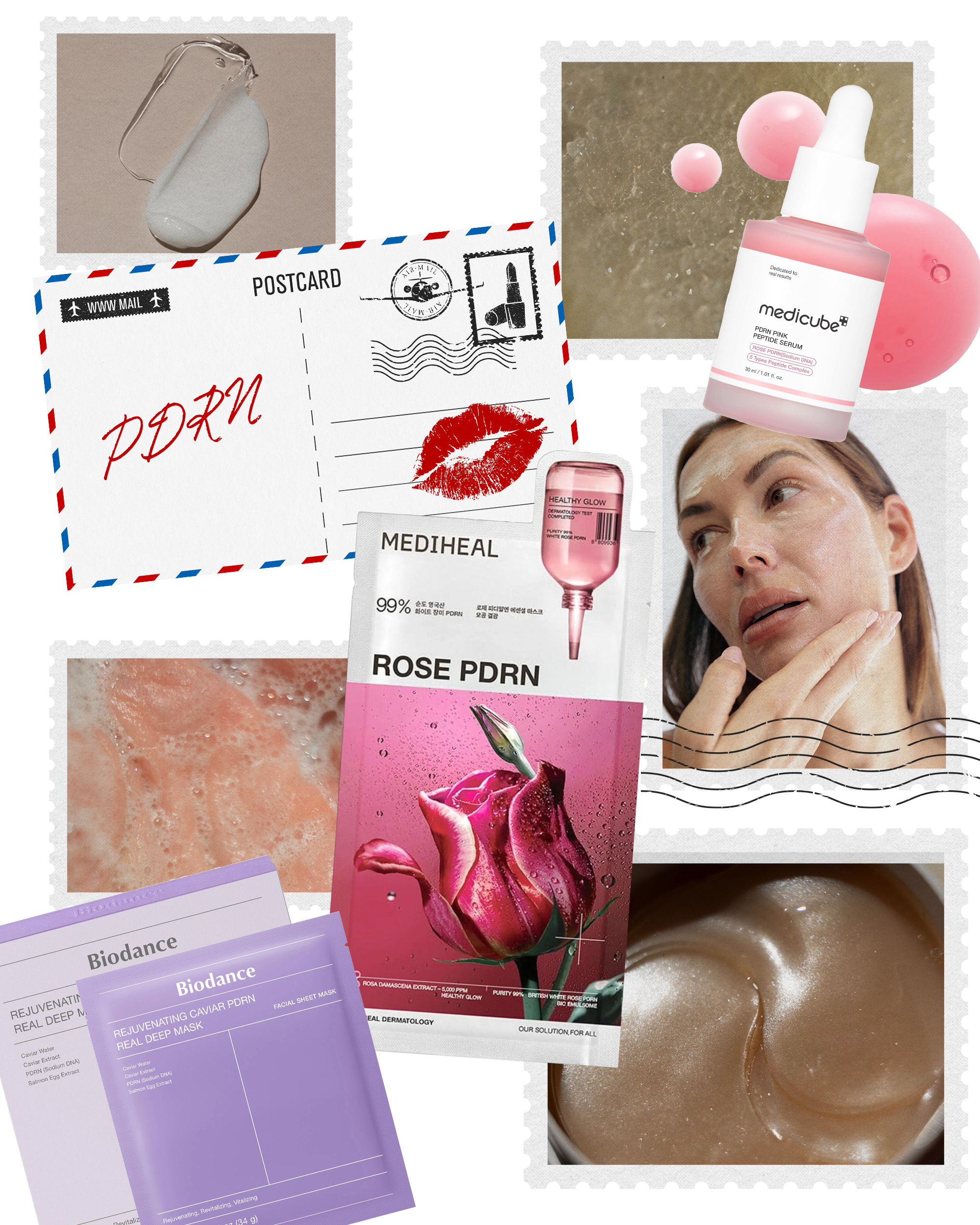
If 2025 taught us one thing, it's that the internet loves PDRN (also known as salmon sperm—yep, you read that correctly). This buzzy ingredient went viral on social media with the help of celebrities like Kim Kardashian and Jennifer Aniston, who are reportedly fans of in-office PDRN skin treatments. So what's the deal with it, and why is everyone and their mother stocking up on PDRN-infused skincare products? The experts can answer that.
First, PDRN stands for polydeoxyribonucleotide. "PDRN is a DNA-derived molecule (traditionally from salmon sperm) used in regenerative dermatology," Karp says. "PDRN improves skin healing and regeneration, boosts fibroblast activity, increases collagen stimulation, and reduces inflammation."
Ban says you might also see salmon-derived PDRN referred to as "sodium DNA." Regardless, it works through DNA synthesis. "DNA is the fundamental building block of all living organisms," he says. "Through DNA synthesis, amino acids and peptides are formed, which are, in turn, the essential components of proteins like collagen and elastin in our body. Since PDRN helps synthesize DNA more efficiently, it plays a key role in promoting skin regeneration by supporting the rebuilding of these core structural proteins."
It works so well it can actually promote the formation of tiny blood vessels. "These microvessels play a critical role in delivering essential nutrients and energy to the areas of the body where they are most needed," Ban says. "You can think of PDRN as building a high-speed expressway—it enhances the efficiency of this delivery system, ensuring that regeneration and repair processes happen faster and more effectively."
As such, PDRN offers myriad benefits for the skin—everything from post-laser healing to boosting elasticity and minimizing visible wrinkles. Karp calls out its efficacy for fading acne scars, specifically. Here's the thing, though. Not all PDRN-spiked skincare products are the same. In fact, they can differ greatly in formulation and efficacy. That's because most PDRN skincare products use plant-derived versions, rather than those from salmon sperm.
"Plant-derived PDRN is considered 'PDRN-like'—it offers similar, but not identical, benefits," Ban says. "Salmon PDRN is regarded as the first generation, plant-based PDRN as the second generation, and Banobagi’s b-PDRN as the third generation microbial PDRN." The latter refers to Ban's own PDRN-infused skincare products. They use a microorganism-derived version isolated from banana sugar spots. "Banana sugar spots contain large amounts of saccharomyces, a yeast with a cell structure similar to human skin cells and rich in amino acids that support elasticity and cell growth. This third-generation Biome PDRN is yeast-derived and helps restore the skin’s natural elasticity."
Karp says that while salmon-derived PDRN has clinical studies to support its wound healing and regenerative properties, more research into plant-derived sources would be helpful. "I think more clinical studies are needed to see how well it works," she says.
Shop the Ingredient
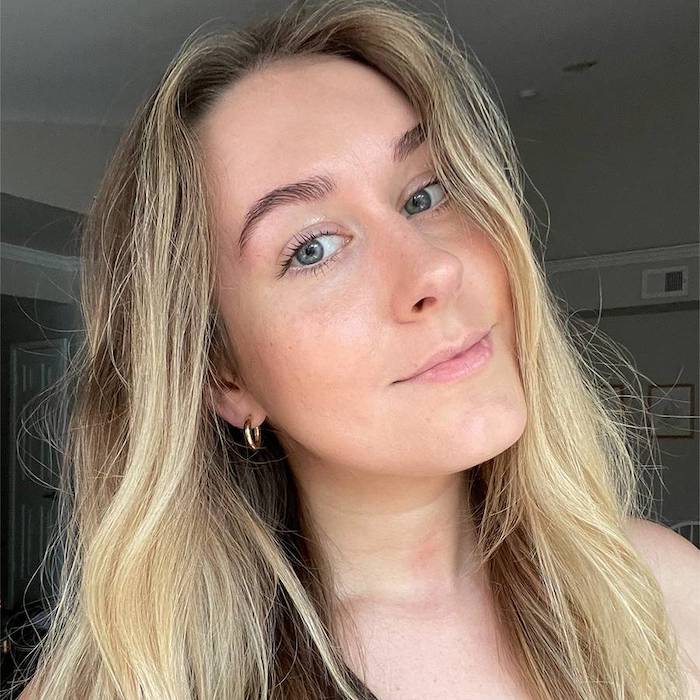
Kaitlyn McLintock is a Beauty Editor at Who What Wear. She has 10 years of experience in the editorial industry, having previously written for other industry-leading publications, like Byrdie, InStyle, The Zoe Report, Bustle, and others. She covers all things beauty and wellness-related, but she has a special passion for creating skincare content (whether that's writing about an innovative in-office treatment, researching the benefits of a certain ingredient, or testing the latest and greatest at-home skin device). Having lived in Los Angeles, California, and Austin, Texas, she has since relocated back to her home state, Michigan. When she's not writing, researching, or testing beauty products, she's working through an ever-growing book collection or swimming in the Great Lakes.
-
 These 19 Beauty Must-Haves Are Officially Making My Zillennial Heart Skip a Beat
These 19 Beauty Must-Haves Are Officially Making My Zillennial Heart Skip a BeatFor the '90s babies and 2000's kids.
-
 I'm Canceling My $300 Facials Thanks to Shark's Brand-New At-Home Device
I'm Canceling My $300 Facials Thanks to Shark's Brand-New At-Home DeviceA serious glow.
-
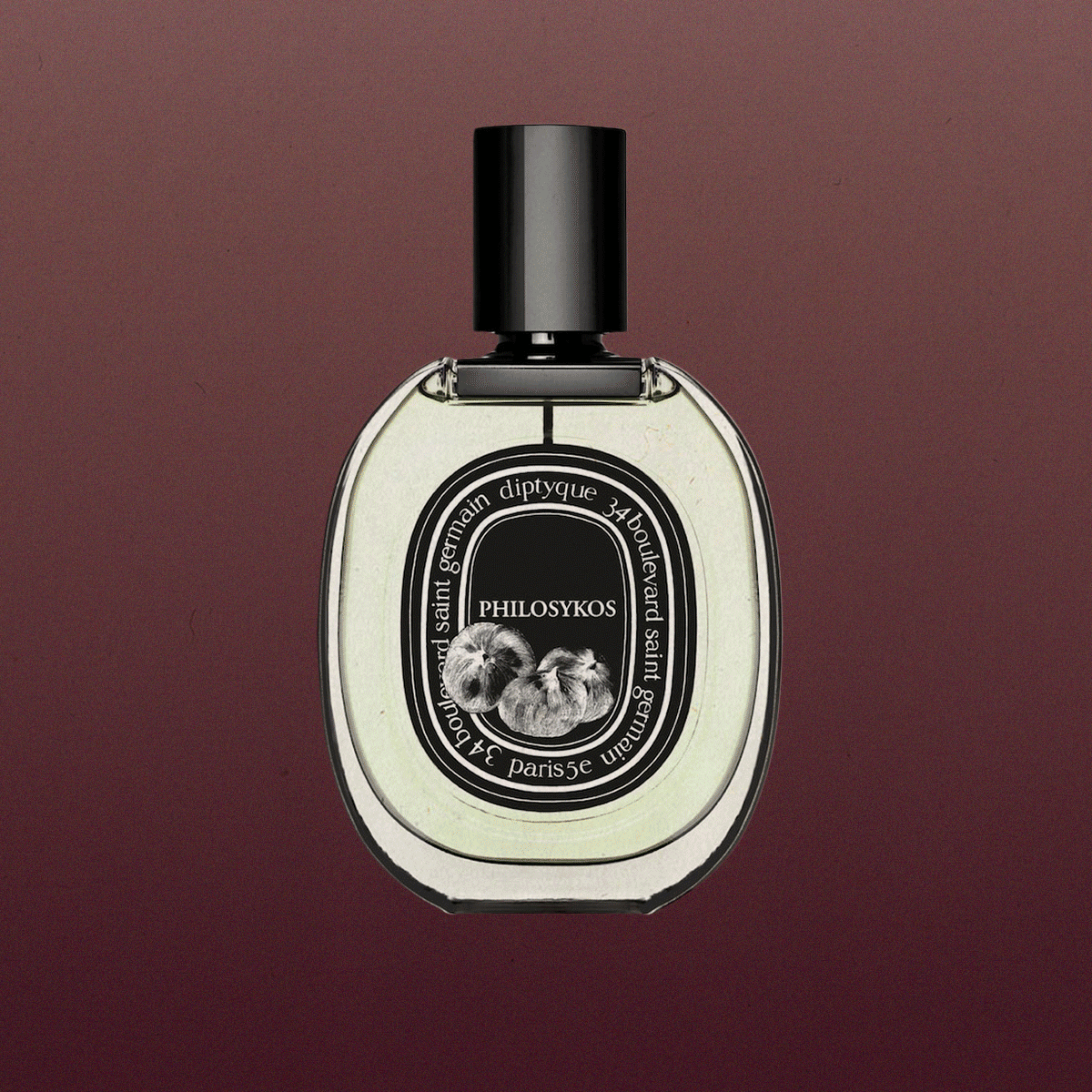 Fig Girl Fall Is Officially Upon Us: This Is How to Master the Jammy Trend, From Scent to Skin
Fig Girl Fall Is Officially Upon Us: This Is How to Master the Jammy Trend, From Scent to SkinIt's time to tap in.
-
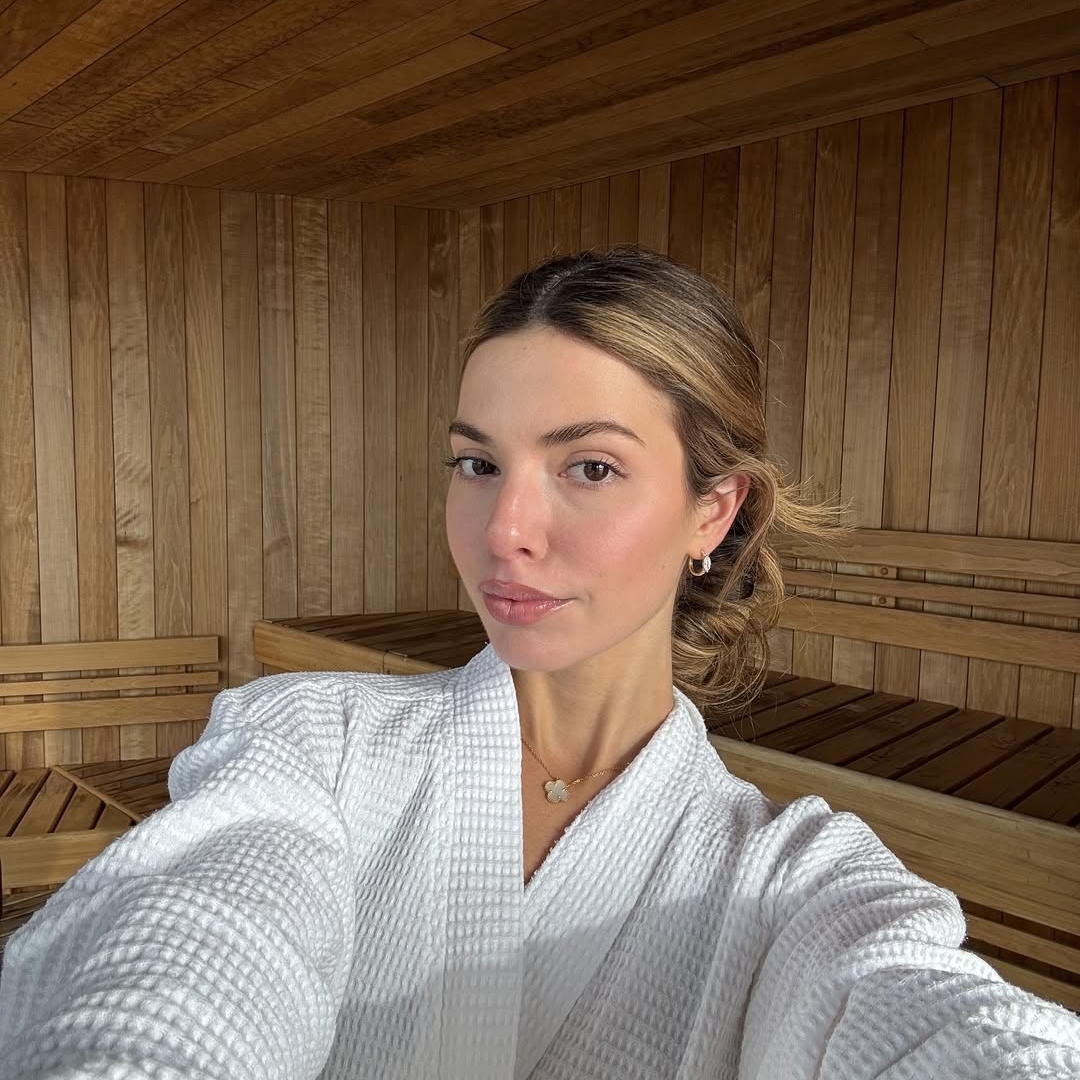 Nordstrom's Top Beauty Tools Have Been Haunting My Wish List for Months—Here's What I'm Snagging
Nordstrom's Top Beauty Tools Have Been Haunting My Wish List for Months—Here's What I'm SnaggingThey're completely worth it.
-
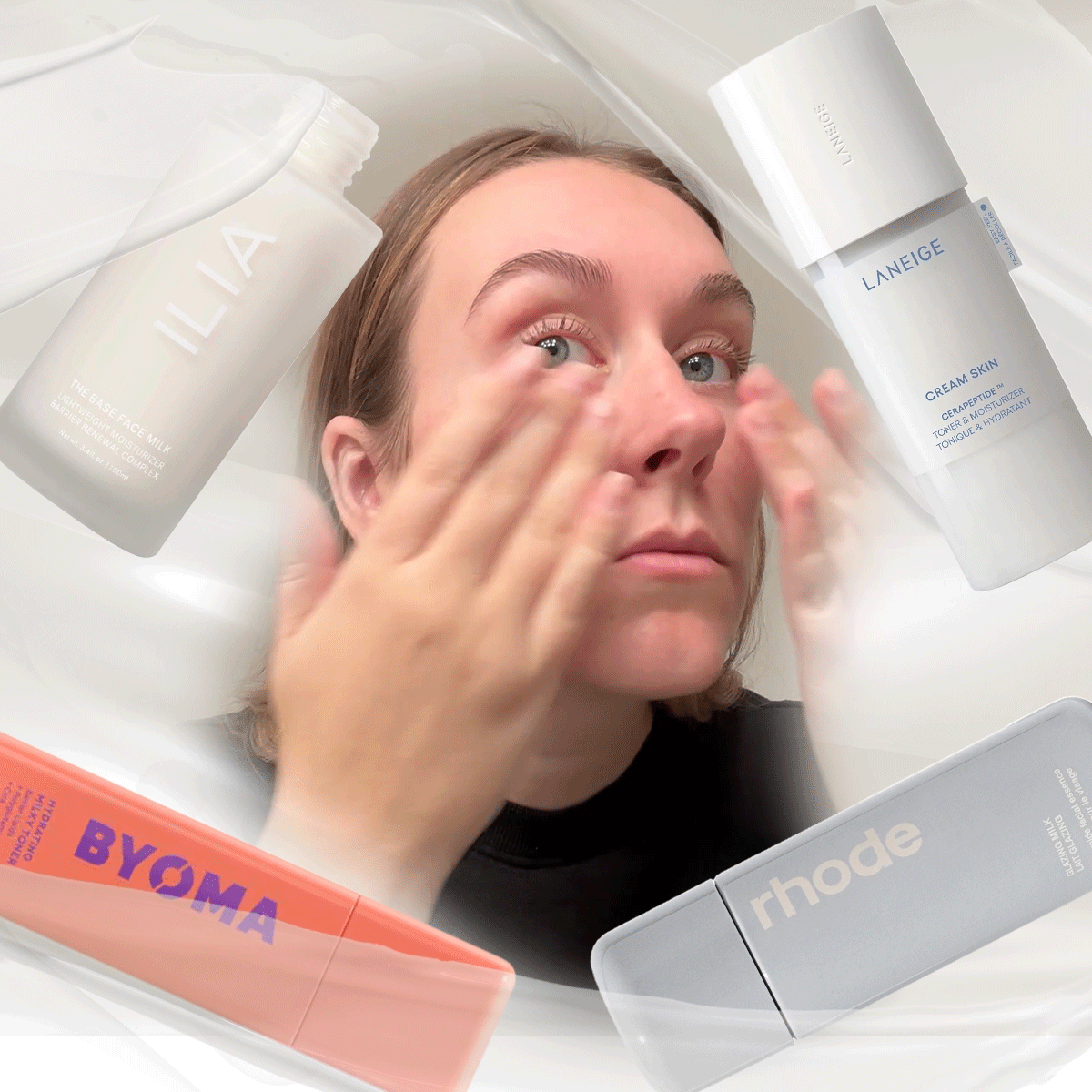 Milky Toners Are All Over the Internet, But These 12 Are Worth The Hype
Milky Toners Are All Over the Internet, But These 12 Are Worth The HypeThey're the in-the-know secret to soft, smooth, cushion-like skin.
-
 Hurry! Kendall Jenner’s Go-To K-Beauty Device Is 29% Off RN on Amazon
Hurry! Kendall Jenner’s Go-To K-Beauty Device Is 29% Off RN on AmazonA glass skin staple.
-
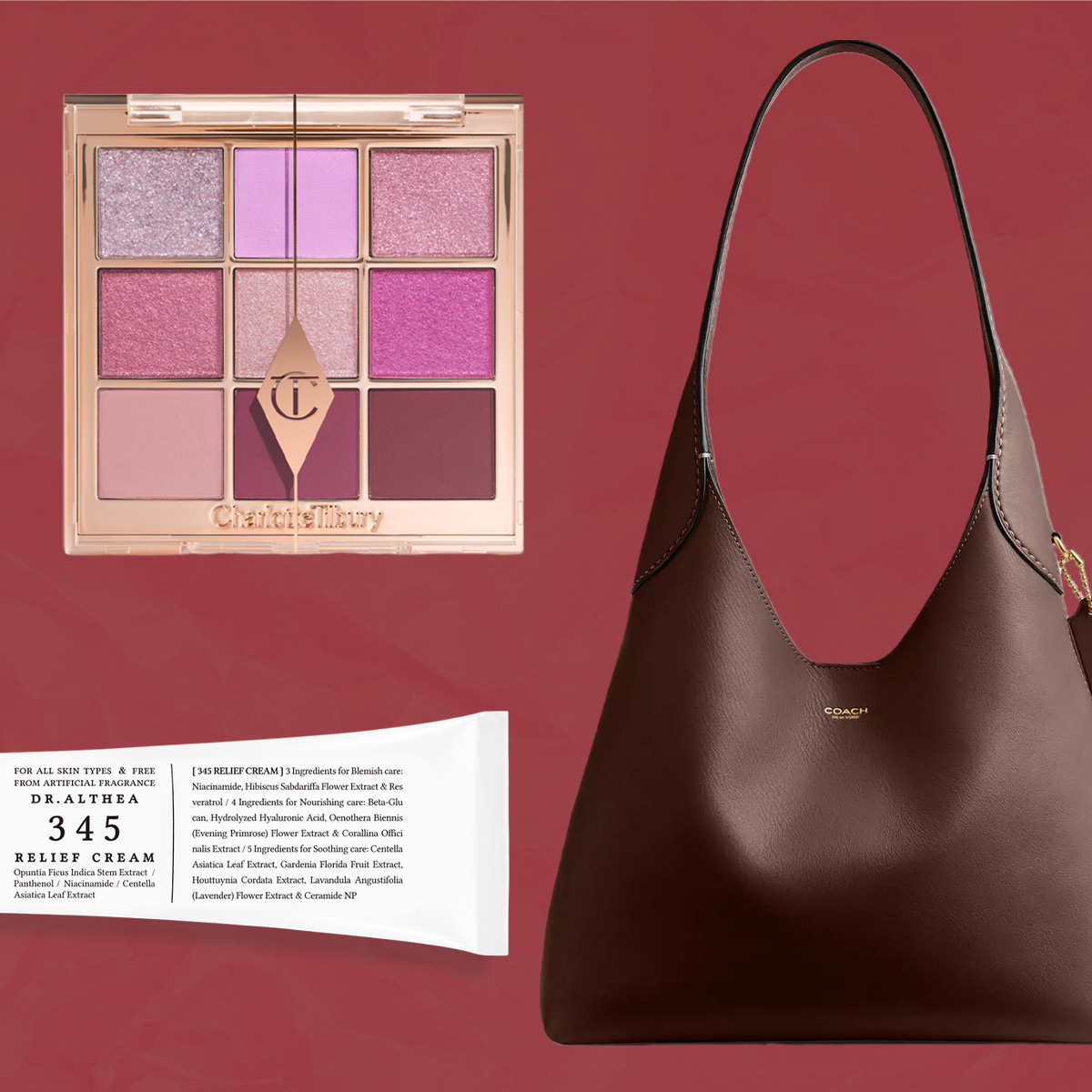 These 11 Winter Beauty Finds Are So Good I'm Carrying Them Around in My Bag RN
These 11 Winter Beauty Finds Are So Good I'm Carrying Them Around in My Bag RNThey're absolutely essential.
-
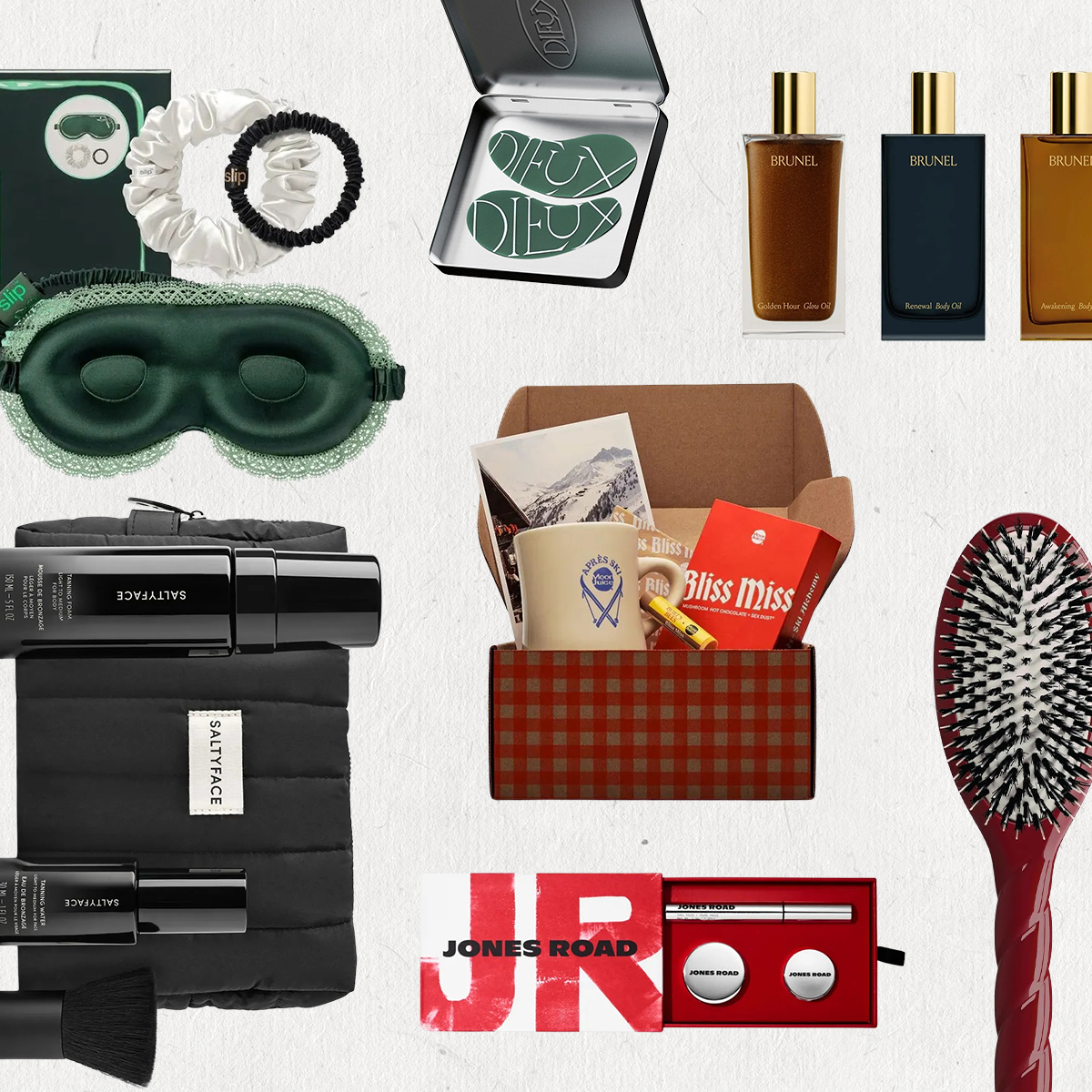 I Spent the Last Two Months Assembling a Cool-Girl Gift Guide—26 Nonbasic, Beauty-Centric Gifts
I Spent the Last Two Months Assembling a Cool-Girl Gift Guide—26 Nonbasic, Beauty-Centric GiftsThese are the items that made it past my picky personality.
